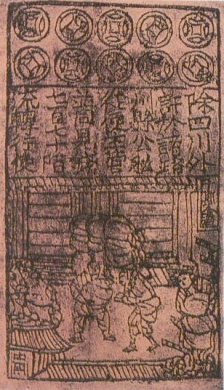 Today, I am told, is the date that the first European banknotes were issued by the Swedish bank, Stockholm Banco, in the year 1661. Banknotes are quite a weird thing, if you think about it, so I thought we might take a look at how we came to accept what is essentially just a piece of paper in place of something that has any intrinsic value. Paper money had been used in China for around eight hundred years. The Ancient Chinese also produced some of the earliest known coins. They were generally round, though there are older coins that are shaped like spades or knives. The coins had a rectangular hole through the middle so they could be strung and worn around the neck. The problem was, if you had a lot of them, they were a bit heavy. So people started leaving their coins with a trustworthy person which was exchanged for a slip of paper stating how many coins had been deposited. These slips of paper could then be used later to retrieve the money. Eventually the notes began to be passed from person to person instead of the coins.
Today, I am told, is the date that the first European banknotes were issued by the Swedish bank, Stockholm Banco, in the year 1661. Banknotes are quite a weird thing, if you think about it, so I thought we might take a look at how we came to accept what is essentially just a piece of paper in place of something that has any intrinsic value. Paper money had been used in China for around eight hundred years. The Ancient Chinese also produced some of the earliest known coins. They were generally round, though there are older coins that are shaped like spades or knives. The coins had a rectangular hole through the middle so they could be strung and worn around the neck. The problem was, if you had a lot of them, they were a bit heavy. So people started leaving their coins with a trustworthy person which was exchanged for a slip of paper stating how many coins had been deposited. These slips of paper could then be used later to retrieve the money. Eventually the notes began to be passed from person to person instead of the coins.
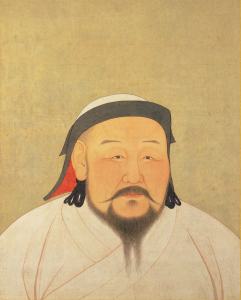 Travellers from Europe such as Marco Polo brought back tales of the strange paper money. In fact in his ‘Travels of Marco Polo’ he devotes a whole chapter to it. He describes how the Emperor, Kublai Khan, had notes made from the bark of mulberry trees, which he had plenty of. He paid for everything with the notes and they were used by all his subjects in place of coins. No one was allowed to refuse the notes, on pain of death. Furthermore, merchants coming to China from abroad, bringing gold, silver, jewels or pearls were allowed to sell to no one but the Emperor. They were paid with his notes, which could be exchanged for anything in his Empire. If there was anyone else left who happened to have any gold, silver, gems or pearls, they could take them to the Royal Mint and get a good price for them, but they were paid in notes made from mulberry bark. So that was how the Emperor ended up with all his empire’s wealth, yet it cost him almost nothing to acquire it. “He hath”, said Polo, “ the Secret of Alchemy in perfection”. The idea of issuing promissory notes travelled to medieval Italy and Flanders and they began to be used as an alternative to transporting cash over long distances, which was both impractical and dangerous.
Travellers from Europe such as Marco Polo brought back tales of the strange paper money. In fact in his ‘Travels of Marco Polo’ he devotes a whole chapter to it. He describes how the Emperor, Kublai Khan, had notes made from the bark of mulberry trees, which he had plenty of. He paid for everything with the notes and they were used by all his subjects in place of coins. No one was allowed to refuse the notes, on pain of death. Furthermore, merchants coming to China from abroad, bringing gold, silver, jewels or pearls were allowed to sell to no one but the Emperor. They were paid with his notes, which could be exchanged for anything in his Empire. If there was anyone else left who happened to have any gold, silver, gems or pearls, they could take them to the Royal Mint and get a good price for them, but they were paid in notes made from mulberry bark. So that was how the Emperor ended up with all his empire’s wealth, yet it cost him almost nothing to acquire it. “He hath”, said Polo, “ the Secret of Alchemy in perfection”. The idea of issuing promissory notes travelled to medieval Italy and Flanders and they began to be used as an alternative to transporting cash over long distances, which was both impractical and dangerous.
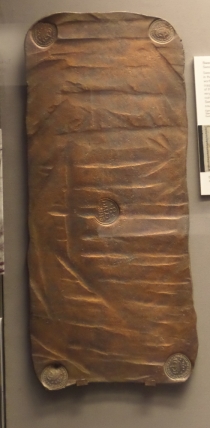
As in China, the notes that were issued in Sweden were also due to the difficulty of carrying heavy money around. Their problems however, were much bigger. Basically there were two currencies that were both called the daler, but one was made of copper and the other of silver. This was a problem because they were both meant to be worth the same amount. Copper was much cheaper than silver, so the copper coins needed to be bigger. Then suddenly copper got really, really cheap. The coins became enormous, huge slabs of copper weighing several kilograms. The largest denomination, the ten daler weighed almost 20 kilograms, that’s 44 lb. Unsurprisingly, people didn’t much want to carry them around, they wanted to deposit them at the bank. The promissory notes they received in exchange were much easier to use. A note could be put in an envelope and posted whereas even a single coin might require a horse and cart.
Sadly, Stockholm Banco decided it would be okay to print more notes than the value of the copper that they held. That didn’t really work out. They went bankrupt after three years. Swedish banks did not issue paper money again until early in the nineteenth century. The Bank of England began to issue paper notes in exchange for real money in 1695, when it was trying to raise money to rebuild the country’s navy after a particularly disastrous war with France. Eventually, paper money became pretty normal everywhere. Coins made from gold, from silver, from copper, could be often too dangerous, and sometimes massively inconvenient to carry around, so everyone was persuaded to accept little pieces of paper, that are essentially useless until you exchange them for something else. Now, of course, we don’t often have the pieces of paper either, just a small plastic card. Money feels even more imaginary but, unfortunately, our world would grind to a halt if we stopped believing in it.
 Today I want to tell you about Queen Christina of Sweden. She is something of a contradictory character. Not entirely good, but also a fascinating person. I didn’t want to celebrate her birth, because she caused a lot of problems for a lot of people. But celebrating her death isn’t really appropriate either, so today I am celebrating her abdication from the throne of Sweden on June 6th 1654.
Today I want to tell you about Queen Christina of Sweden. She is something of a contradictory character. Not entirely good, but also a fascinating person. I didn’t want to celebrate her birth, because she caused a lot of problems for a lot of people. But celebrating her death isn’t really appropriate either, so today I am celebrating her abdication from the throne of Sweden on June 6th 1654.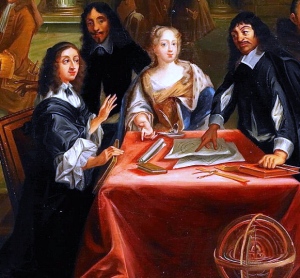 Christina was hugely interested in arts and sciences and, by 1649, had amassed an enormous collection of paintings, statues, manuscripts, coins and scientific instruments. She was equally interested in opera and theatre and was a bit of an amateur actress herself. Christina wanted to make her capital, Stockholm, the “Athens of the North” and she invited many learned men to her court. Most notably, she asked René Descartes. Christina had a lot of stuff she felt she needed to learn about. Her days were long and she decided the only time she could possibly see Descartes was at five in the morning. The climate and possibly the early starts didn’t agree with poor Descartes and, sadly, he caught pneumonia and died there in 1650.
Christina was hugely interested in arts and sciences and, by 1649, had amassed an enormous collection of paintings, statues, manuscripts, coins and scientific instruments. She was equally interested in opera and theatre and was a bit of an amateur actress herself. Christina wanted to make her capital, Stockholm, the “Athens of the North” and she invited many learned men to her court. Most notably, she asked René Descartes. Christina had a lot of stuff she felt she needed to learn about. Her days were long and she decided the only time she could possibly see Descartes was at five in the morning. The climate and possibly the early starts didn’t agree with poor Descartes and, sadly, he caught pneumonia and died there in 1650.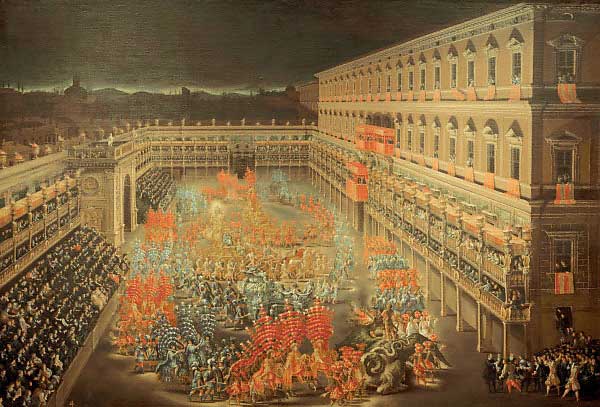
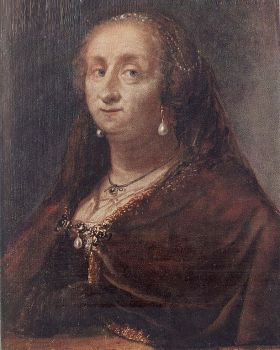 She continued to be a bit of a rebel, supplying the world with her unsolicited opinions, long after she had lost her rights to rule. When Louis XIV revoked the rights of French Protestants, she wrote him a letter of objection. In 1686, she made the Pope put an end to an awful practice of chasing Jews through the streets at Carnival. Then, she issued a declaration pronouncing all Roman Jews under her protection and signed it ‘the Queen’.
She continued to be a bit of a rebel, supplying the world with her unsolicited opinions, long after she had lost her rights to rule. When Louis XIV revoked the rights of French Protestants, she wrote him a letter of objection. In 1686, she made the Pope put an end to an awful practice of chasing Jews through the streets at Carnival. Then, she issued a declaration pronouncing all Roman Jews under her protection and signed it ‘the Queen’.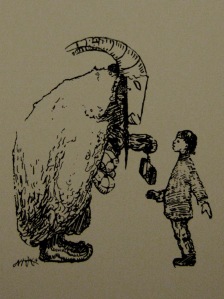 Christmas seems like ages ago now doesn’t it? If you celebrated all twelve days of it, then it ended at Epiphany last week. People in some parts of Sweden and Finland are still going though. And who can blame them? Their dark winter nights are much longer than ours, so they deserve an extra week.
Christmas seems like ages ago now doesn’t it? If you celebrated all twelve days of it, then it ended at Epiphany last week. People in some parts of Sweden and Finland are still going though. And who can blame them? Their dark winter nights are much longer than ours, so they deserve an extra week.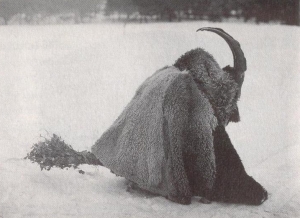 Clearly this has nothing whatsoever to do with a Christian festival and is probably related to something much older. The mid winter celebrations are a time for gathering your family together and this could also include family members no longer with us. At one time, dead relatives would be expected to join the feast too, in spirit at least. It’s good to see family, but no one wants a guest who outstays their welcome. You wouldn’t want a spirit hanging round all year, that would be a nuisance and they would be likely to turn bad. The Nuuttipukki comes into your house and makes a big fuss to scare the spirits away. He wears a mask so that he won’t be recognised by any spirits who might decide to go and bother him instead.
Clearly this has nothing whatsoever to do with a Christian festival and is probably related to something much older. The mid winter celebrations are a time for gathering your family together and this could also include family members no longer with us. At one time, dead relatives would be expected to join the feast too, in spirit at least. It’s good to see family, but no one wants a guest who outstays their welcome. You wouldn’t want a spirit hanging round all year, that would be a nuisance and they would be likely to turn bad. The Nuuttipukki comes into your house and makes a big fuss to scare the spirits away. He wears a mask so that he won’t be recognised by any spirits who might decide to go and bother him instead.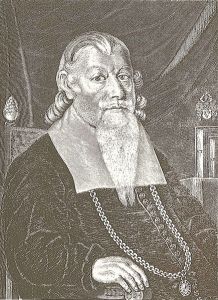 Today I want to tell you about Peder Winstrup, bishop of Lund. Peder was born in 1605 in Copenhagen. He was made bishop of Lund in 1638 and was clearly something of a diplomat, as he managed to hang on to his position when Lund moved from Danish to Swedish control in 1658. He was very interested in science, he made studies of animal behaviour and tried to find out if it was true that the cuckoo puts its young in another bird’s nest. Education was important to him and he was instrumental in the founding of the University of Lund which happened in 1666. He died on this day in 1679 and was laid to rest in the cathedral in Lund.
Today I want to tell you about Peder Winstrup, bishop of Lund. Peder was born in 1605 in Copenhagen. He was made bishop of Lund in 1638 and was clearly something of a diplomat, as he managed to hang on to his position when Lund moved from Danish to Swedish control in 1658. He was very interested in science, he made studies of animal behaviour and tried to find out if it was true that the cuckoo puts its young in another bird’s nest. Education was important to him and he was instrumental in the founding of the University of Lund which happened in 1666. He died on this day in 1679 and was laid to rest in the cathedral in Lund.